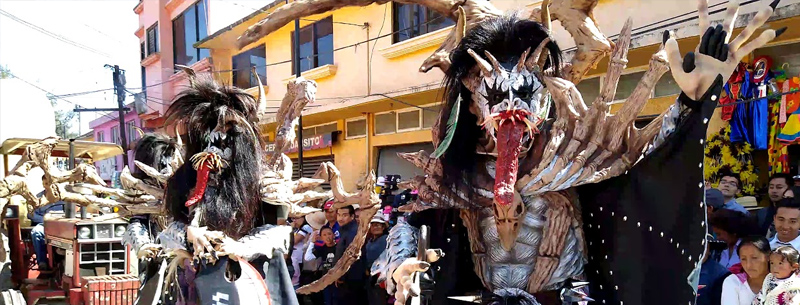What is it about a festival that brings people from diverse cultural backgrounds and all walks of life together? Is it the energy fizzing off the crowd? The hypnotic beat of the music or the tantalizing aroma of exotic food? Or at a simple, uncomplicated level, do we crave the sense of belonging that comes from being part of a collective celebration?
San Francisco Carnaval has all the trappings of a great festival — the sights, the sounds, the dancing in the streets, the street vendor food, a monster parade — all wrapped into one big weekend-long party. Conceived by a group of local musicians, artists, and residents eager to bring the spirit of Latin American and Caribbean culture to the city, Carnival San Francisco has grown over the years into California’s largest annual multicultural celebration.
Carnaval – San Francisco Celebration
Carnaval San Francisco is a raucous, joyful celebration of the city’s Latin American and Caribbean arts heritage. The Carnival brings alive the city’s Latin Quarter in the historic Mission District. When you plan your next visit here try to coordinate your trip with Carnaval, it will be the highlight of your stay.
Under the guiding principle that music, dance, and art have power to heal and unite people, Carnaval aims to create flowing zones of harmony and revelry where cross-cultural relationships can flourish.
Over the Memorial Day weekend, the city comes to life for an enormous two-day festival and grand parade, pulsating with dancing, drumming, live music, brilliant costumes, delicious food, and artistry from Brazil, Mexico, Bolivia, Colombia, Trinidad, Tobago, Puerto Rico, Cuba, Nicaragua, Panama, Peru, Guatemala, Africa, Chile, and Haiti mostly created by Mission District residents and Bay Area artists. The event draws an annual crowd of more than 400,000.
The Grand Parade
Brace yourself for a fabulous selection of local street food, street music, scores of fantastically costumed dancers, arts, crafts, a host of fun activities; and crowd-pleasing live entertainment spread over multiple stages.
The Grand Parade on Sunday morning at around 9:30 shows off a fabulous procession of local organizations featuring colorful floats, each one extravagantly decorated to depict rich multicultural themes. During the parade, you also see more than 30 music and dance groups, each one showcasing this year’s theme.
The parade is a seemingly-endless, hypnotic flow of hundreds of local performers who entertain and engage with the crowd. Swirling Brazilian-style Escola samba schools of up to 300 members dance through the streets with fantastic feathered headdresses bobbing precariously to the rhythm; and sweeping Bahia skirts swishing provocatively to the beat.
Not to be outdone, Caribbean contingents bring to life the distinctive music and dance of the Bahamas, Cuba, Jamaica, Puerto Rico, and Trinidad. Other groups featured in the parade include Mexican Aztec performers, traditional African drummers, Polynesian dancers, Japanese drummers, giant puppets and folkloric groups representing Guatemala, Honduras, and Bolivia. It’s an amazing ethno-fusion!
The Grand Parade stretches out along eight city blocks, starting at the corner of 24th and Bryant streets, and proceeds west to Mission Street, before heading north on Mission Street to 17th Street, where it turns east on 17th to its grand finale at South Van Ness. Most of the festival takes place on Harrison Street between 16th and 24th Streets.
Admission
The parade is free, although they usually request a donation at the entrances. Grandstand seating for the parade, located on Mission Street between 21st and 22nd streets, is available for purchase online.
Live Music
On virtually every street corner of the festival, DJs will be spinning Latin and Caribbean beats such as cumbia, cha cha cha, tango, and salsa. You will hear hip-hop, rancheras, samba, and reggae music echoing down the streets during Carnaval San Francisco.
Several areas of Carnaval are home to live bands. The main stage is at the corner of 17th and Harrison. This is where you will find the most popular performers during the festival.
Carnaval San Francisco – Origins
San Francisco Carnaval blossomed from its inauspicious inception in Precita Park in the Mission District in 1979. Those founding members comprised people from all walks of life and cultures, ranging from musicians, dancers, and artists, mostly local residents. The festival’s growth and development since then are attributable to the passion of its founding members who longed to bring the traditional Carnaval celebrations of their native homelands to San Francisco.
The weather was distinctly unkind on that first Sunday. February 25th, 1979, was a windy, cold, and rainy day in San Francisco. Despite the weather, about three hundred drummers and dancers, dressed in a riot of colors and costumes, paraded around Precita Park in the Mission District.
From the magic that first Carnaval worked, it became clear this could evolve into an annual event. A planning committee was quickly formed and Carnaval began to grow, overcoming many teething troubles along the way. While the Precita neighbors wanted Carnaval back, the Parks and Recreation Department believed the small park wasn’t suitable for a larger crowd. So in 1980, a longer parade down Mission Street heralded a full day of music and dance in Dolores Park, drawing thousands.
The increasingly popular Carnaval proved too much for Dolores Park and the Department of Parks and Recreation determined once was enough. The following year, the parade was moved to June and followed Mission Street to the Civic Center, where for the next three years, Carnaval San Francisco brought 50,000 to 75,000 people to the city.
Burnout and permit conflicts left the City with no Carnaval in 1984, before the Mission Economic Cultural Association (MECA), took it over. After one year positioning the stages in front of City Hall, and two years on 24th Street, Carnaval once again relocated to its present site along Harrison Street from 16th to 22nd. Ever since, annual crowds have ranged from a quarter million to half a million and Carnaval, now even bigger and more colorful, continues to dance its way through the heart of San Francisco’s Mission District.
